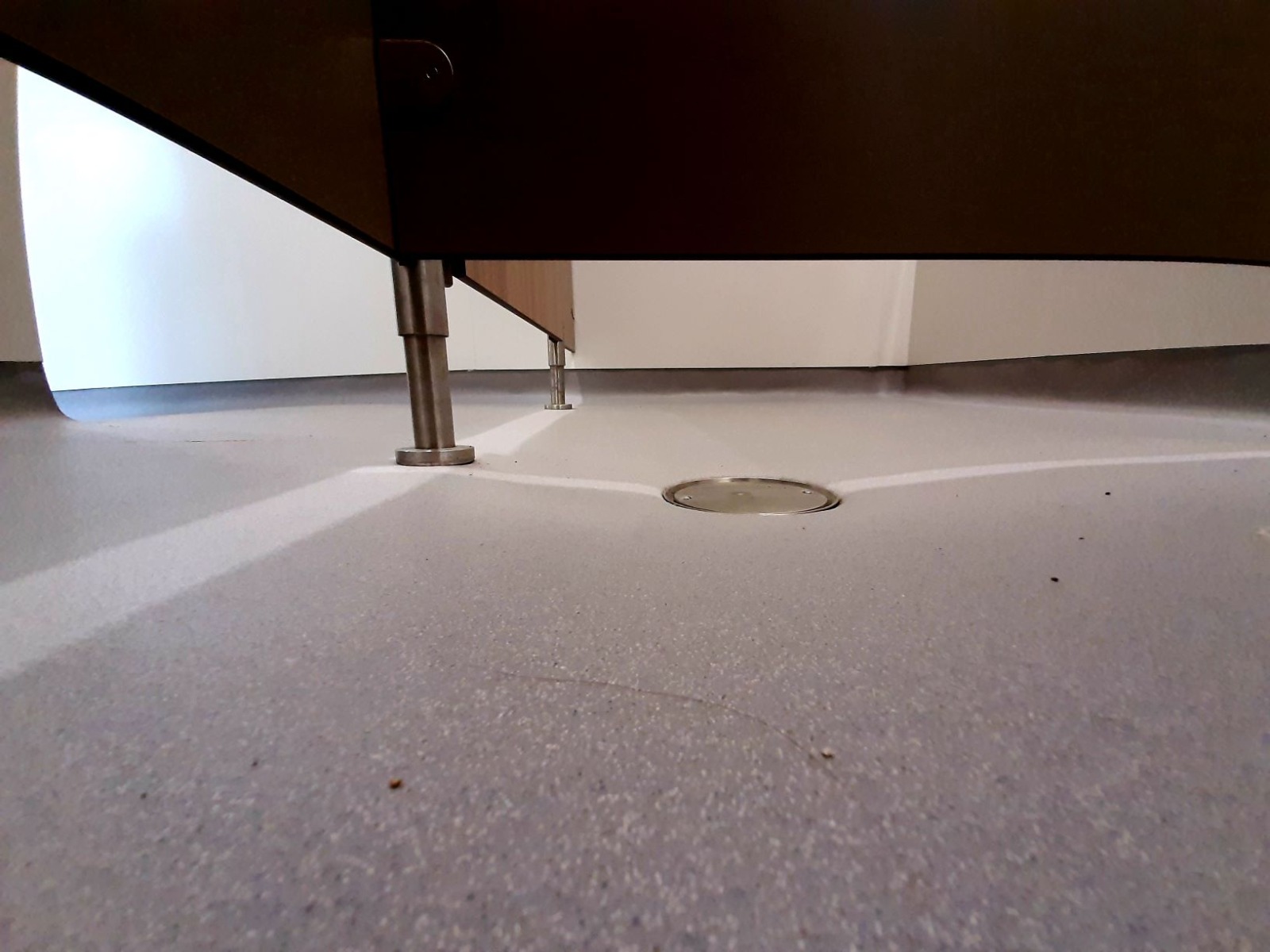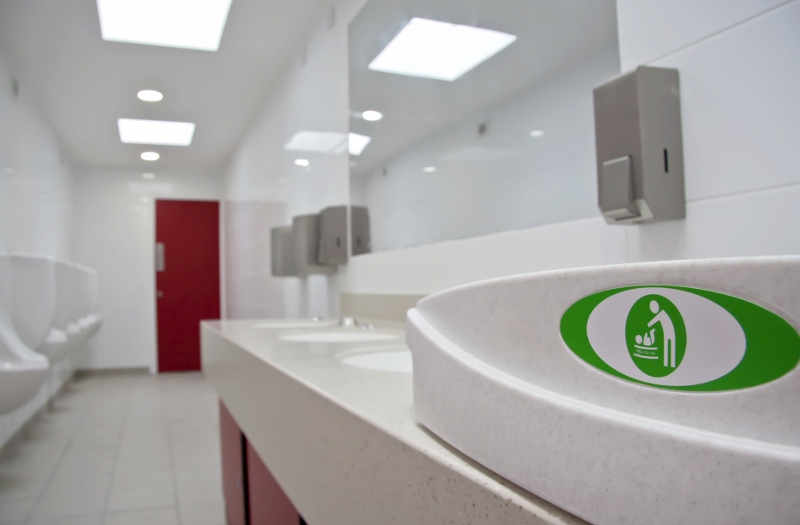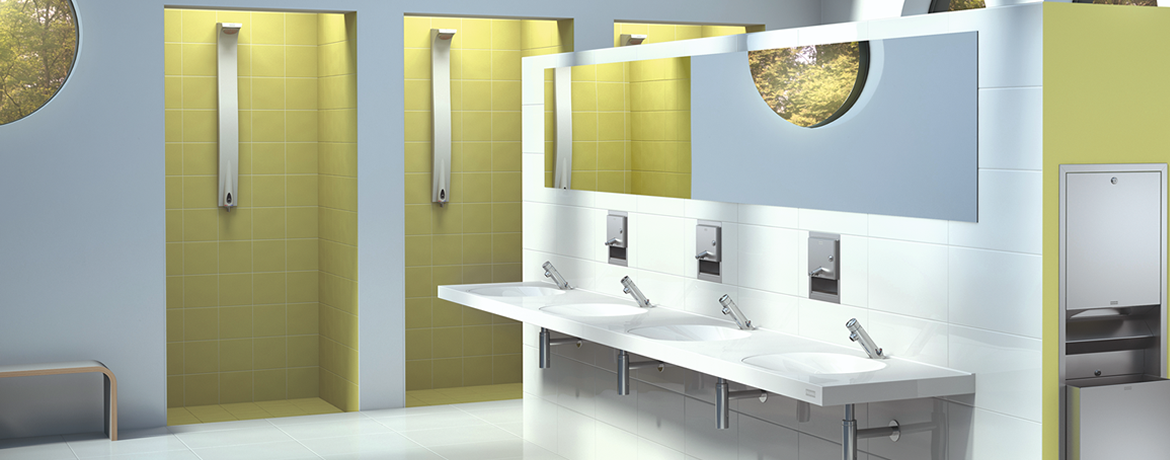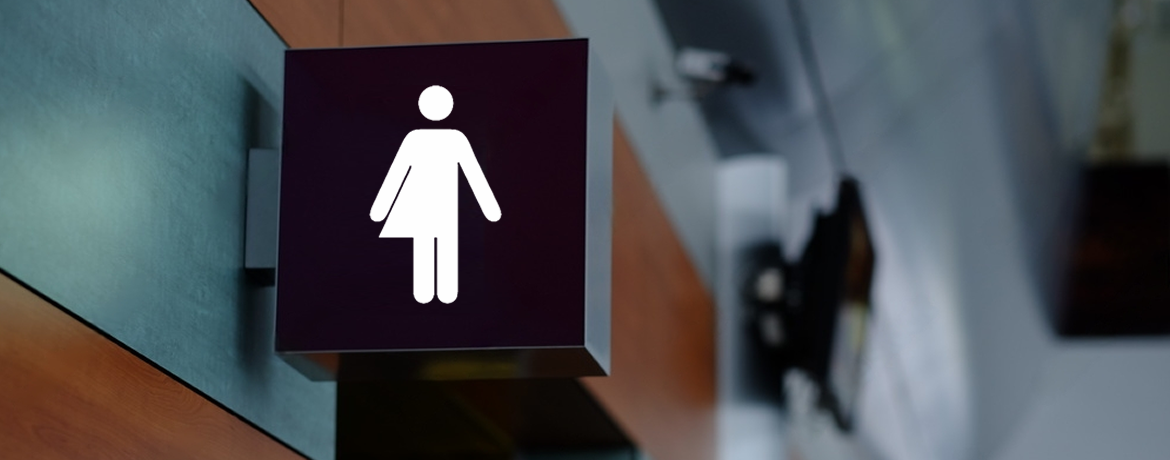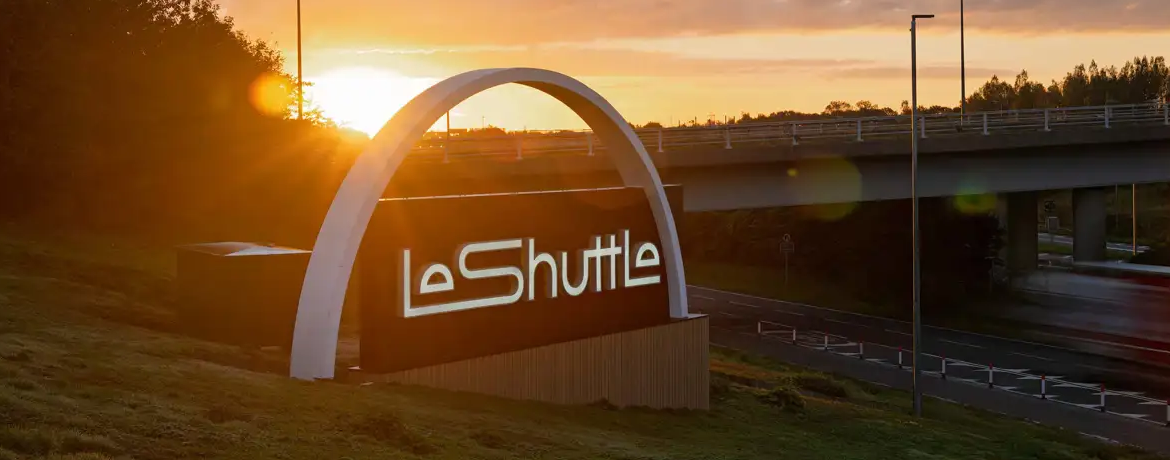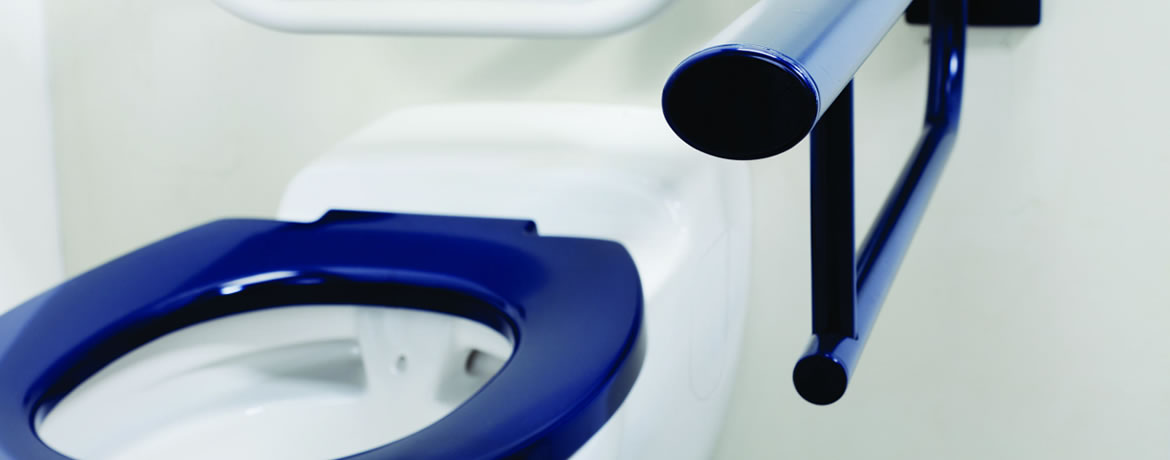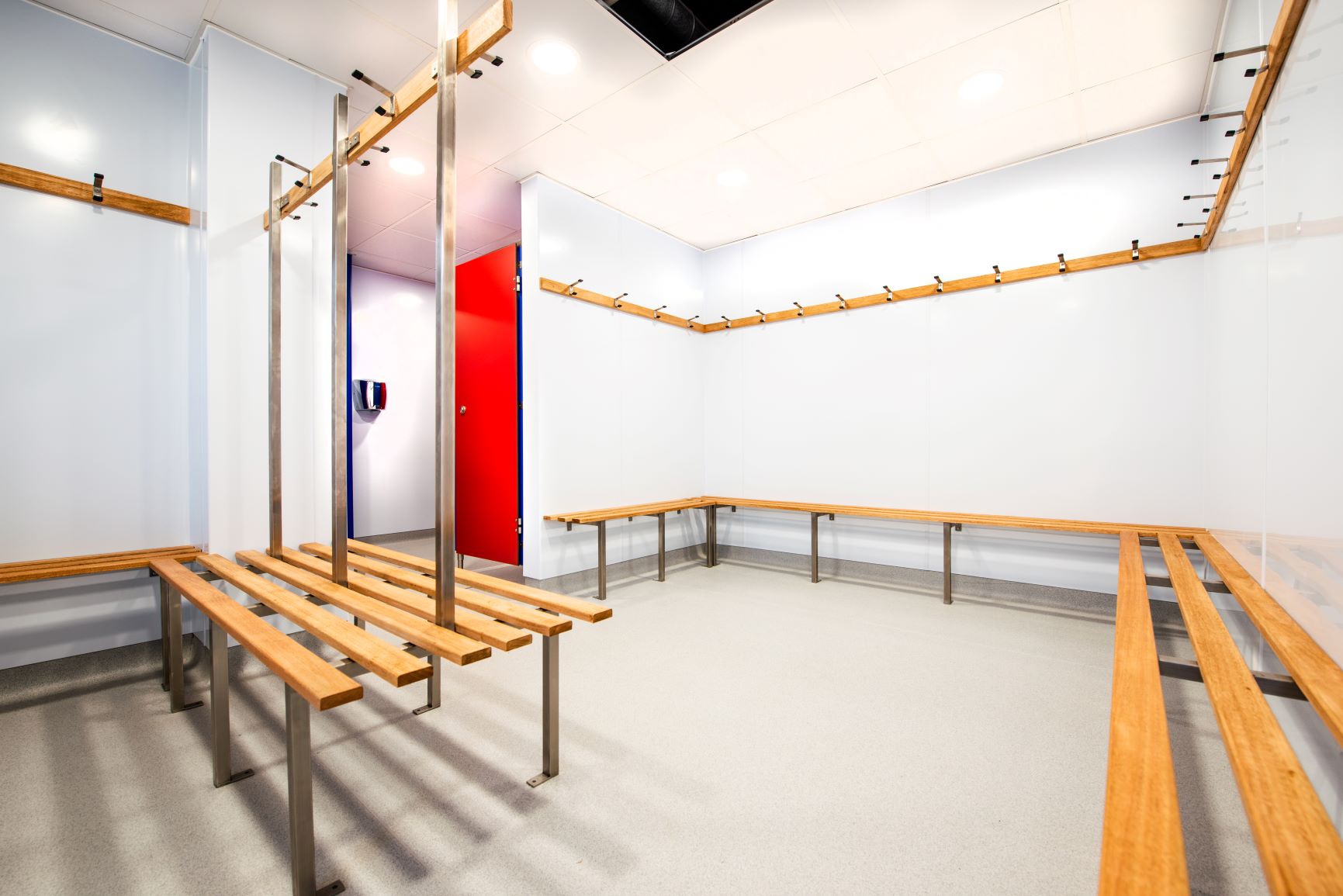A Typical Public Washroom Specification
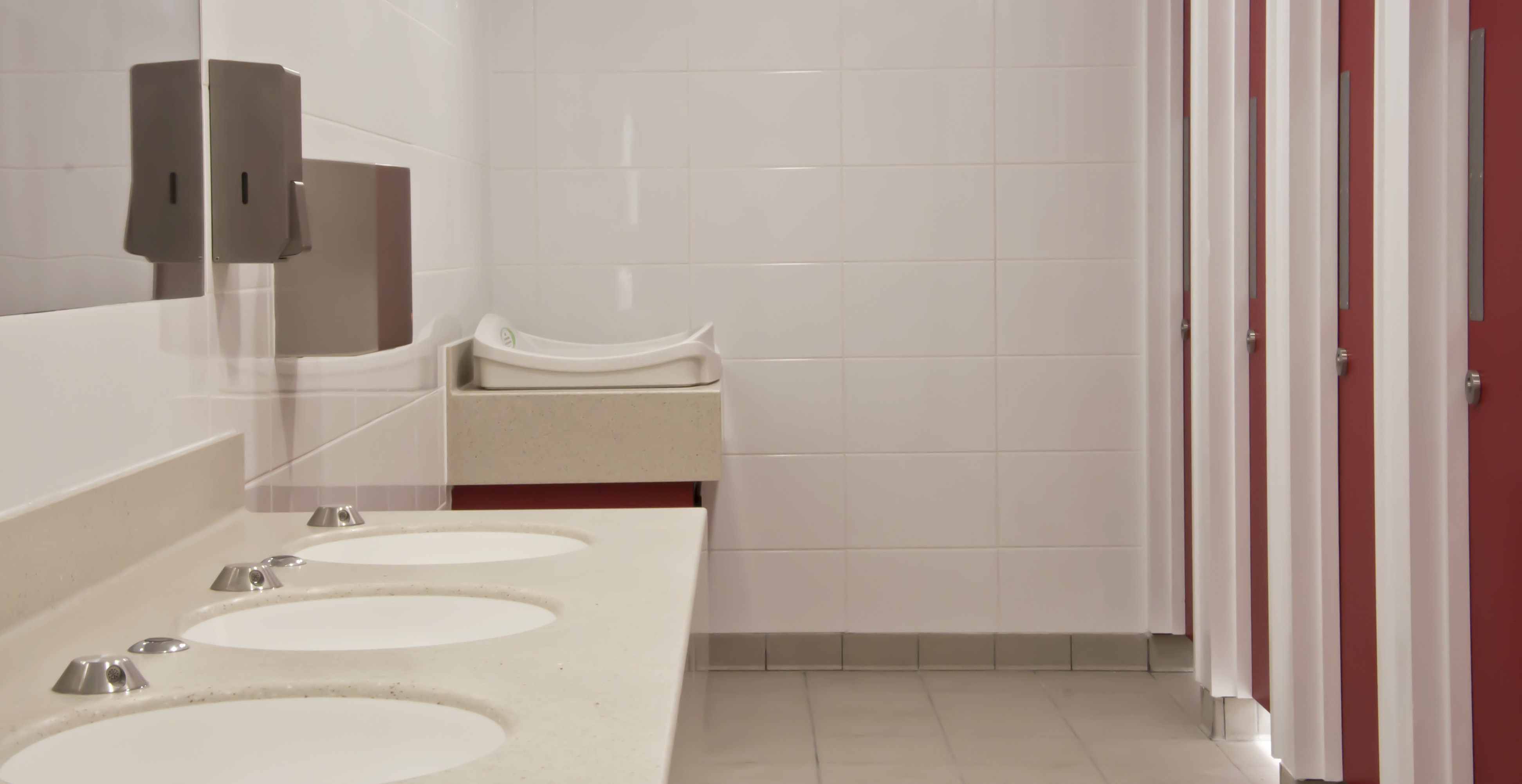
See Also: Washroom & Toilet Refurbishment Services
Grotty public toilets are thankfully becoming a thing of the past, even in areas prone to vandalism. With new technologies and importance placed on creating light, open and airy spaces, public washroom design has come on leaps and bounds.
Today, you are as likely to find contemporary design and sensor activation in the loos behind the supermarket, as you are in a swanky new shopping centre. So let’s take a look at some of the typical specifications of the modern public washroom.
Washroom Lighting
Lighting is important in any washroom, but in the public environment, where the facilities might not be monitored at regular intervals, sensor activation is key. PIR lighting is activated when someone enters the room. The light stays on for a set period of time, then automatically switches off, unless reactivated by human movement, which breaks the infra-red beam. Installing these devices can deliver substantial economic savings, and can even be put on a timer so that it is disabled during the day. This is best practice for washrooms that benefit from plenty of natural light and darker washrooms, or washrooms that have no windows will need PIR sensors switched on constantly.
Washroom Flooring
Anti-slip flooring is absolutely essential and helps to prevent a whole host of accidents and liabilities. The safety flooring you’ll have seen in hospitals and schools, which goes down in very much the same way as kitchen lino, is a solid choice. However, further down the road when repairs may be needed, the patching of them can be a touch difficult. Hard-wearing floor tiles that have anti-slip properties are another favourite and should any break or need replacing, it can be done simply and efficiently. Floor tiles do have exposed grout lines though, which can slowly deteriorate and is prone to harbouring bacteria, making deep cleans a little more hard work compared to the lino-like flooring option. Whichever route you go down, you’ll have sturdy measures in place to protect users against accidental slips and falls.
Floor Drains
While we are on the subject of flooring and deep cleans, the decision to incorporate a floor drain could make servicing and maintenance a whole lot easier for caretakers and contracted cleaners. This allows the room to be hosed down efficiently and any escaped water can drain away freely.
Wall Covering
To aid durability and cleaning, a water-resistant wall covering is also needed throughout your washroom. Tiles have for years proved a successful option, but solid grade laminate (SGL) is now a common alternative that is completely impervious to water and comes in an incredibly wide range of colours. The other benefit of using SGL to clad the walls of your washroom is that it can also be used for the cubicles and IPS DUCT systems, allowing you to deliver a seamless, consistent, and clean looking washroom that’s as durable as it is easy to clean.
Waste Bins
The size of your waste bins is dependent on how frequently your washroom will be cleaned and monitored and how busy the footfall of this location actually is. The usual option is to go quite big, but if you have hand dryers, as opposed to paper hand towels, then the waste generated from the facilities is actually quite small and will more than likely come from people's own litter.
Baby changing units
No longer only found in the female washrooms, baby changing trays are now expected in male washrooms as well. Solid surface changing space can be integrated, which is perhaps the most durable option as there are no moving parts and fits the end of a vanity unit or countertop. Traditional fold down options are also widely used in public toilets and are often either located on the wall near to the sink and waste bin or in the disabled toilet above the toilet pan itself.
Hand wash area
Of course, the hand wash area is the one most susceptible to vandalism and all in one units, like the Thrii Anti-vandal unit, sit recessed into the wall and offer soap, water, and hand dryer. However, there are a number of wall-mounted washbasins that can be installed that boast high durability credentials. These can be used alongside counter mounted sensor taps, which protrude up from the sink or countertop just a few millimetres so that they can't be pried away.
Other anti-vandal features
You may also want to consider things like shatter-resistant toilet seats, which prevent users from gaining sharp edges in which to harm themselves or others. Stainless steel has been a favourite in public toilets for years, and for good reason. The metal fixtures are relatively cheap, difficult to damage, and easy to sanitise. However, some local authorities are looking to move away from the look of stainless steel and opting for white porcelain style toilets that carry anti-shatter design benefits.
Taps and water temperature
Away form durability and vandalism, you should give consideration to your taps as users with impaired mobility might not be able to operate a traditional tap. Sensor taps take care of this very easily, but lever-operated, or push taps are also very sensible solutions. You’ll want to also make sure that the temperature of hot water delivered through the tap is controlled via a TMV3 valve. This clever piece of kit blends both hot and cold water supply to a set temperature and ensures none of your washroom users ever gets scalded.
The exact specifications of public washrooms, of course, vary from location to location, and whether initiated by a local authority, or a commercial developer, the user's needs are the same. By considering the needs of babies, young children, adults, the elderly, the vulnerable, and the disabled, you'll create a specification fit for the entire community.
If you would like to discuss public toilets further or find out how our design and 3D imaging services may benefit you, please get in touch today on 01202 650900.
MORE TO EXPLORE IN Related Posts

KWC DVS Recessed Wall Mounting Soap Dispenser 1L

Magrini Countertop Baby Changing Unit

Back to Wall Toilet IPS (Integrated Plumbing System)

DVS Vandal Resistant Deck Mounted Sensor Tap
As low as £57.60 £48.00

